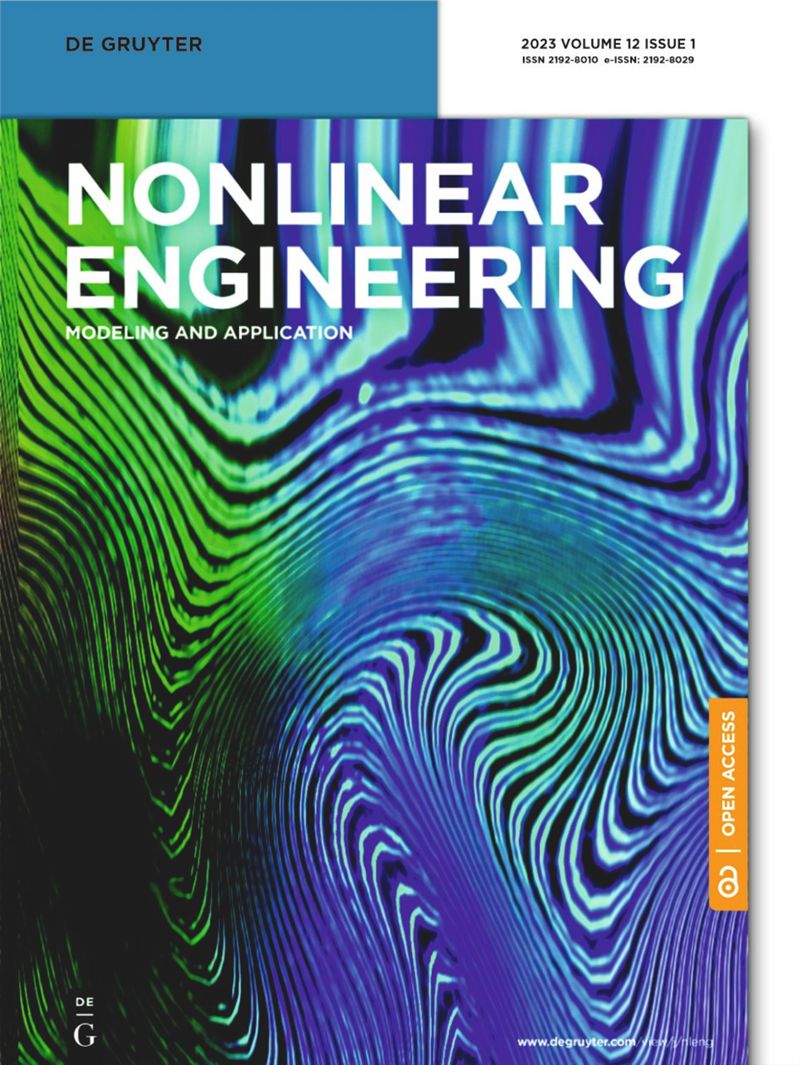Influence of the blade size on the dynamic characteristic damage identification of wind turbine blades
IF 1.5
Q2 ENGINEERING, MECHANICAL
引用次数: 1
Abstract
Abstract In this article, the sensitivity coefficients of dynamic characteristic damage identification of blades with different sizes were investigated. The results show that the first third-order vibration modes of the blade before and after damage are consistent, and the wind turbine blade size has no significant effect on the vibration mode; with the increase of the blade size, the first-, third- and fourth-order natural frequency sensitivity coefficients decrease gradually, while the second-, fifth- and sixth-order natural frequency sensitivity coefficients increase gradually; as the blade size increases, the third-order displacement mode sensitivity coefficient of the blade gradually increases, which indicates that the displacement modes identification effect is better with the increase of the blade size. With the increase of the blade size, the first- and third-order strain modal sensitivity coefficients increase gradually, which indicates that when using first- and third-order strain modes for damage identification, the larger the blade size, the better the identification effect; with the increase of the blade size, the second-order strain modal sensitivity coefficient decreases gradually, which indicates that when using second-order strain mode for damage identification, the larger the blade size, the worse the identification effect. This research could provide a theoretical basis for the application of the dynamic characteristic damage identification method in the damage identification of wind turbine blades of different sizes.叶片尺寸对风力机叶片动态特性损伤识别的影响
摘要研究了不同尺寸叶片动特性损伤识别的敏感性系数。结果表明:损伤前后叶片的一阶三阶振动模态一致,风机叶片尺寸对其振动模态无显著影响;随着叶片尺寸的增大,一、三、四阶固有频率敏感系数逐渐减小,而二、五、六阶固有频率敏感系数逐渐增大;随着叶片尺寸的增大,叶片的三阶位移模态敏感系数逐渐增大,表明随着叶片尺寸的增大,位移模态识别效果越好。随着叶片尺寸的增大,一阶和三阶应变模态灵敏度系数逐渐增大,表明采用一阶和三阶应变模态进行损伤识别时,叶片尺寸越大,识别效果越好;随着叶片尺寸的增大,二阶应变模态敏感系数逐渐减小,说明采用二阶应变模态进行损伤识别时,叶片尺寸越大,识别效果越差。该研究可为动态特性损伤识别方法在不同尺寸风力机叶片损伤识别中的应用提供理论依据。
本文章由计算机程序翻译,如有差异,请以英文原文为准。
求助全文
约1分钟内获得全文
求助全文
来源期刊
CiteScore
6.20
自引率
3.60%
发文量
49
审稿时长
44 weeks
期刊介绍:
The Journal of Nonlinear Engineering aims to be a platform for sharing original research results in theoretical, experimental, practical, and applied nonlinear phenomena within engineering. It serves as a forum to exchange ideas and applications of nonlinear problems across various engineering disciplines. Articles are considered for publication if they explore nonlinearities in engineering systems, offering realistic mathematical modeling, utilizing nonlinearity for new designs, stabilizing systems, understanding system behavior through nonlinearity, optimizing systems based on nonlinear interactions, and developing algorithms to harness and leverage nonlinear elements.

 求助内容:
求助内容: 应助结果提醒方式:
应助结果提醒方式:


